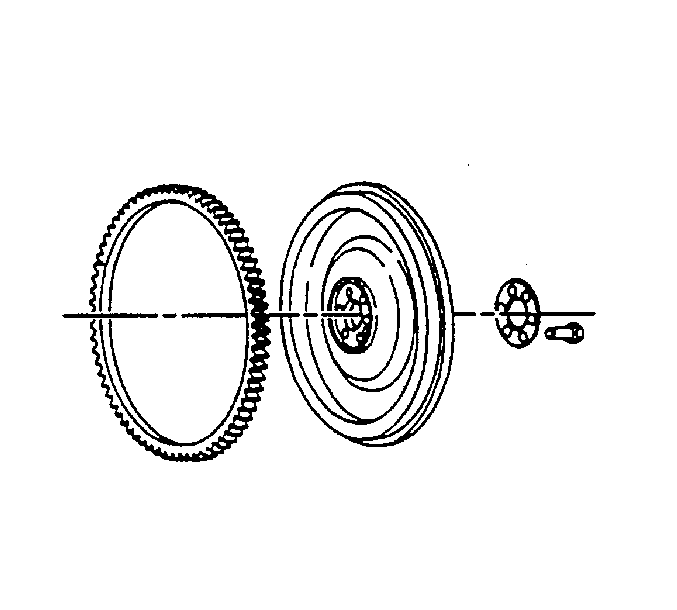Removal Procedure
Caution: Unless directed otherwise, the ignition and start switch must be in the OFF or LOCK position, and all electrical loads must be OFF before servicing
any electrical component. Disconnect the negative battery cable to prevent an electrical spark should a tool or equipment come in contact with an exposed electrical terminal. Failure to follow these precautions may result in personal injury and/or damage to
the vehicle or its components.
- Disconnect
the negative battery cable.
- Raise the vehicle. Refer to
Lifting and Jacking the Vehicle
in General Information.
- Remove the transmission assembly. Refer to
Transmission Replacement
in Automatic Transmission or
Transmission Replacement
in Manual Transmission.
- Remove the clutch assembly, if equipped.

- Remove the flywheel bolts
and spacer.
- Remove the flywheel assembly.
- Inspect the flywheel for the following conditions:
- Inspect the flywheel ring gear for worn or broken teeth.
Installation Procedure
- Install the flywheel to the crankshaft.

Notice: Use the correct fastener in the correct location. Replacement fasteners
must be the correct part number for that application. Fasteners requiring
replacement or fasteners requiring the use of thread locking compound or sealant
are identified in the service procedure. Do not use paints, lubricants, or
corrosion inhibitors on fasteners or fastener joint surfaces unless specified.
These coatings affect fastener torque and joint clamping force and may damage
the fastener. Use the correct tightening sequence and specifications when
installing fasteners in order to avoid damage to parts and systems.
- Install the flywheel
bolts and spacer.
Tighten
Tighten the flywheel bolts, in the first stage, to 78 N·m
(58 lb ft).
- Install the clutch to the flywheel , if equipped.
- Install the transmission assembly. Refer to
Transmission Replacement
in Automatic Transmission or
Transmission Replacement
in Manual Transmission.
- Lower the vehicle.
- Connect the negative battery cable.


